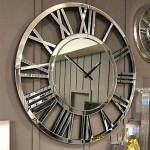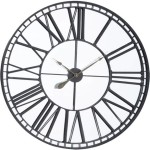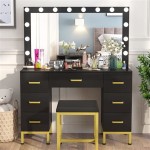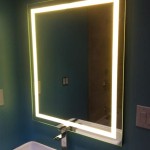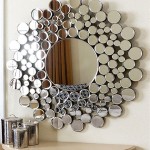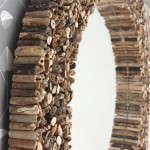Painting a Mirror Frame White: A Comprehensive Guide
Painting a mirror frame white can revitalise a room, lending it a brighter, cleaner, and more contemporary aesthetic. Whether you're aiming to complement a minimalist décor, create a beachy vibe, or simply update an outdated frame, a fresh coat of white paint offers a versatile solution. This article details the process of painting a mirror frame white, addressing preparation, painting techniques, and achieving a professional finish. Selecting the appropriate materials and employing careful execution are crucial for a durable and visually appealing outcome. This guide is designed to provide the necessary information for individuals with varying levels of DIY experience.
Preparation: Setting the Stage for Success
Proper preparation is paramount to achieving a smooth, even finish when painting a mirror frame. Neglecting this stage can result in paint adhesion issues, visible imperfections, and a less-than-desirable final product. Thorough preparation encompasses several key steps, each contributing to the overall quality of the paint job.
Firstly, the work area must be appropriately prepared. Spread a drop cloth or newspaper to protect the surrounding floor and furniture from paint splatters. Adequate ventilation is also essential. Open windows or use a fan to ensure proper airflow, especially when working with oil-based paints, which release stronger fumes.
Next, the mirror itself must be protected. Use painter's tape to carefully mask off the mirror's edges, ensuring a precise and clean line. Overlap the tape slightly onto the frame to prevent paint from seeping underneath. For intricate frame designs, applying multiple layers of tape may be necessary to achieve a tight seal. If the mirror is removable from the frame, removing it entirely simplifies the painting process and eliminates the risk of accidental paint contact.
Cleaning the frame is the next crucial step. Use a mild detergent and water to remove dirt, dust, grease, and any other contaminants from the frame's surface. A clean surface promotes better paint adhesion. Pay particular attention to areas that may accumulate grease or grime, such as corners and crevices. After washing, thoroughly rinse the frame with clean water and allow it to dry completely before proceeding.
Once the frame is clean and dry, inspect it for any imperfections, such as scratches, dents, or chipped paint. Fill any imperfections with wood filler or spackle, depending on the material of the frame. Apply the filler sparingly and evenly, using a putty knife to smooth it flush with the surrounding surface. Allow the filler to dry completely according to the manufacturer's instructions. Once dry, sand the filled areas smooth with fine-grit sandpaper, blending them seamlessly with the rest of the frame. This step is crucial for achieving a uniform and flawless finish.
Finally, lightly sand the entire frame with fine-grit sandpaper (220-grit or higher). This creates a slightly roughened surface, which enhances paint adhesion. Sand in the direction of the wood grain, if applicable. After sanding, thoroughly remove all sanding dust with a tack cloth or a damp cloth. This ensures a clean surface for priming and painting.
Painting Techniques: Applying the White Coat
Selecting the appropriate paint and applying it correctly are critical for achieving a professional-looking white finish on the mirror frame. The choice of paint depends on the material of the frame and the desired sheen. Acrylic latex paint is a popular choice for its ease of use, water-based cleanup, and low odor. Oil-based paint offers greater durability and a smoother finish but requires mineral spirits for cleanup and has a stronger odor. Primer is essential for ensuring proper paint adhesion and creating a uniform surface.
Begin by applying a coat of primer to the entire frame. Primer seals the surface, prevents the paint from being absorbed unevenly, and provides a better surface for the paint to adhere to. Use a brush or a spray can primer, applying it in thin, even coats. Allow the primer to dry completely according to the manufacturer's instructions. Lightly sand the primed surface with fine-grit sandpaper to smooth out any imperfections and remove any brushstrokes or texture. Remove the sanding dust with a tack cloth.
Next, apply the first coat of white paint. Use a high-quality brush, foam roller, or spray gun, depending on the size and complexity of the frame. Apply the paint in thin, even coats, avoiding drips and runs. If using a brush, apply the paint in the direction of the wood grain, if applicable. If using a roller, apply the paint in overlapping strokes, ensuring complete coverage. If using a spray gun, hold the gun at a consistent distance from the frame and move it in smooth, even strokes. Overlapping each stroke slightly will help ensure an even coat. Avoid applying too much paint in one area, as this can lead to drips and runs. Allow the first coat of paint to dry completely according to the manufacturer's instructions.
After the first coat of paint is dry, inspect the frame for any imperfections, such as brushstrokes, drips, or uneven coverage. Lightly sand the frame with fine-grit sandpaper to smooth out any imperfections. Remove the sanding dust with a tack cloth. Apply a second coat of white paint, using the same technique as the first coat. This second coat will provide better coverage and a more uniform finish. Allow the second coat of paint to dry completely according to the manufacturer's instructions. For a particularly durable or flawless finish, a third coat may be necessary. Always allow each coat to dry completely before applying the next.
When painting frames with intricate details, using a brush with angled bristles can help reach into tight corners and crevices. For spraying, consider using specialized spray tips with adjustable patterns to better control the paint flow and minimize overspray in complex areas. Taking the time to master the technique for applying the paint is essential to achieving a professional finish.
Achieving a Professional Finish: Details Matter
The final steps are crucial for achieving a professional-looking finish on the painted mirror frame. These steps include removing the painter's tape, addressing any imperfections, and protecting the finished surface.
Carefully remove the painter's tape while the paint is still slightly wet. This will prevent the paint from chipping or peeling along the edges. Pull the tape away from the mirror at a 45-degree angle, using a sharp utility knife to score along the edge of the tape if necessary. If any paint has seeped under the tape, carefully touch it up with a small brush and the same paint. Clean any smudges or fingerprints from the mirror with a glass cleaner.
Inspect the painted frame for any remaining imperfections, such as drips, runs, or uneven coverage. If any imperfections are found, lightly sand them smooth with fine-grit sandpaper and touch them up with a small brush and the same paint. Allow the touch-up paint to dry completely.
To protect the finished paint and add a layer of durability, consider applying a coat of clear polyurethane varnish or a wax finish. Apply the varnish or wax in thin, even coats, following the manufacturer's instructions. Allow the varnish or wax to dry completely before handling the mirror frame. A wax finish will need to be buffed to achieve the required sheen. A clear coat will also make the surface easily cleanable, thereby helping to maintain the frame's appearance for many years.
Reattach the mirror to the frame, if it was removed. Be careful not to scratch the paint or the mirror. Use appropriate hardware to secure the mirror to the frame. Once the mirror is securely attached, clean the entire assembly one final time to remove any fingerprints or dust. The mirror frame is now painted white and ready to be displayed.
By following these detailed steps, anyone can successfully paint a mirror frame white and achieve a professional-looking finish, enhancing the decor of any room efficiently. The key lies in meticulous preparation, careful painting techniques, and attention to detail during the finishing stages.

12 Techniques To Painting Antique Mirrors Hallstrom Home

Chalk Painting And Antiquing A Frame My Vintage Porch Antique Mirror Diy Frames

How To Properly Paint A Mirror Frame

How To Paint A Mirror Meg Del Design Furniture Diy Blog

Diy Painted Mirror Frame Interior Redoux

12 Techniques To Painting Antique Mirrors Hallstrom Home

How To Paint A Mirror Frame

12 Techniques To Painting Antique Mirrors Hallstrom Home

Mirror On The Wall It S Time For Your Second Spray Paint Makeover Frame Diy Painting Frames

Giant Ornate Mirror Update My Favorite Tool For Painting All Those Details Confessions Of A Serial Do It Yourselfer

